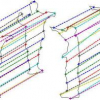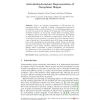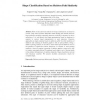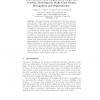5 search results - page 1 / 1 » Using the Inner-Distance for Classification of Articulated S... |
CVPR
2005
IEEE
15 years 1 months ago
2005
IEEE
We propose using the inner-distance between landmark points to build shape descriptors. The inner-distance is defined as the length of the shortest path between landmark points wi...
ECCV
2010
Springer
13 years 9 months ago
2010
Springer
Given a set of points corresponding to a 2D projection of a non-planar shape, we would like to obtain a representation invariant to articulations (under no self-occlusions). It is ...
CVPR
2005
IEEE
15 years 1 months ago
2005
IEEE
Both example-based and model-based approaches for classifying contour shapes can encounter difficulties when dealing with classes that have large nonlinear variability, especially...
EMMCVPR
2007
Springer
14 years 5 months ago
2007
Springer
Most of the traditional methods for shape classification are based on contour. They often encounter difficulties when dealing with classes that have large nonlinear variability, es...
ECCV
2006
Springer
15 years 1 months ago
2006
Springer
Abstract. This paper proposes a new approach to learning a discriminative model of object classes, incorporating appearance, shape and context information efficiently. The learned ...




